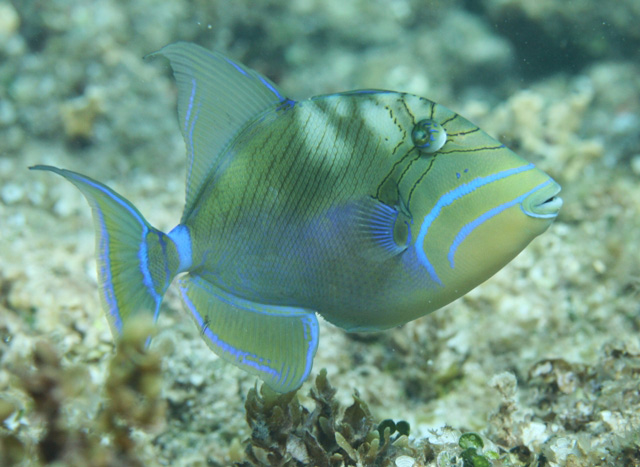| Balistidae (Triggerfishes) |
| 60 cm TL (male/unsexed); max.weight: 5,440.0 g; max. reported age: 14 years |
|
reef-associated; marine; depth range 2 - 275 m |
| Western and Eastern Atlantic. |
|
Dorsal spines (total): 3-3; Dorsal soft rays (total): 29-32; Anal spines: 0-0; Anal soft rays: 27-29. Greenish or bluish gray on back, orange-yellow on lower part of head and abdomen, with two broad diagonal curved bright blue bands running from snout to below and in front of pectoral fins, the lowermost continuous with a blue ring around lips; a broad blue bar across caudal peduncle, and blue sub-marginal bands in median fins (Ref. 13442). |
| Found over rocky or coral areas (Ref. 5217). May form schools, sometimes solitary over sand and grassy areas. Feeds mainly on benthic invertebrates (Ref. 4727). It preys on sea urchins by blowing water to overturn it and then attacks it where the spines are short (Ref. 9710). Excellent food fish but occasionally can cause intoxication due to the liver. |
|
Near Threatened (NT); Date assessed: 06 June 2011 Ref. (130435)
|
| poisonous to eat |
Source and more info: www.fishbase.org. For personal, classroom, and other internal use only. Not for publication.

